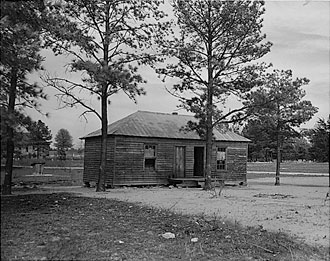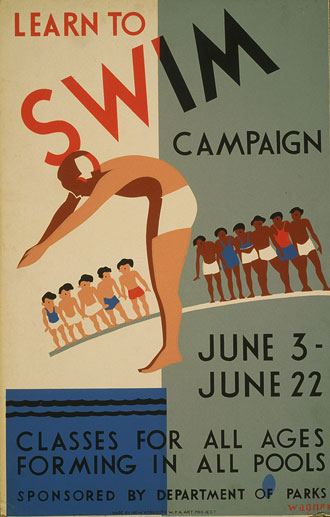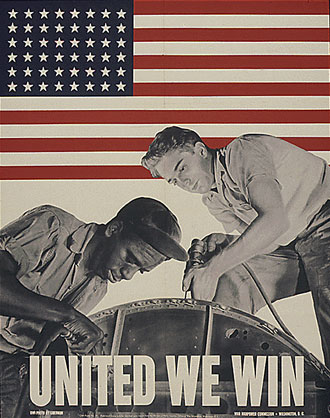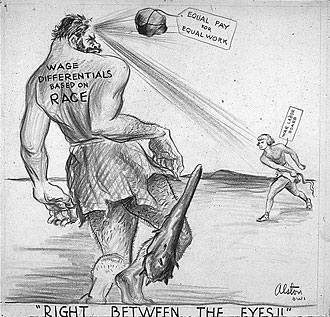




Advanced Search
Dress Up | 1st Person | African American Map | Now Read This | Magic Lens | Tool Videos | Architecture | e-Postcards | Chronologies
Dorothy Pryor - 1934-1945: Discrimination North and SouthHaving grown up in the north and attended college in the South before the end of World War II, by the time she reached adulthood, Dorothy Pryor had witnessed or experienced a variety of racially charged interactions... Learn more about Dorothy Pryor: View a timeline of her life and listen to her full interview. Stories by this speaker
This photograph of a “one-teacher [African American] schoolhouse in Newberry County, South Carolina was taken in 1941. While Dorothy attended desegregated schools in Springfield, Mass., school segregation remained legal in the South. When it came to education, southern black children received less than white children. They were crowded into substandard buildings, had access to fewer books and were taught by teachers who had not received the same caliber of training as those who taught white children. In contrast, by 1855 Massachusetts had become the first state in the nation to pass a law prohibiting school segregation. Dorothy remembers attending, “Classical High School, which was about number three in the nation on college prep…. I had marvelous teachers. I had a marvelous education.” This is not to say that discrimination was absent from Dorothy’s educational life: I had all…the mental equipment and…and the support from my teachers, so that, you know, I did well. I was, in my class, top…top of my class. And it was interesting....apparently there was one female teacher, whose name I don't really recall, who couldn't believe that this black child, African-American, Negro – whatever they were calling me – could be that smart. She said, wait’ll she gets in my class. Well guess what? There were a couple of male, white teachers – well there weren't any black teachers, anyway – …who used to be sure, at the beginning of the school year, that I was never in any of her classes. So when I graduated top of my class, there it was. It was interesting. You get angels all the most unexpected places. And I…one of the things I know about my life is that I've been blessed by angels in various and sundry places....I was blessed. I had good parents, I had good friends, I had good teachers, and the good Lord gave me a brain and I was able to use it. In 1961, twenty years after Dorothy Pryor graduated at the top of her class from Classical High School in Springfield, Mass., and seven years after the United States Supreme Court had decided that “separate but equal” in education was just not possible, Time magazine reported that things had changed little in the South. In an article titled, “Dying Resistance,” Time reported that, “So far, only token compliance with the school desegregation law prevails. In the public schools of Alabama, Georgia, Mississippi and South Carolina, integration is nonexistent. In Louisiana, it consists of four little Negro girls in two New Orleans schools.”1 Newberry County, South Carolina. View of one-teacher [African-American] schoolhouse in Newberry County, South Carolina. National Archives, ARC Identifier 522778 / Local Identifier 83-G-44658 1“Education: The Education of the South,” Time, April 7, 1961. http://www.time.com/time/magazine/article/0,9171,874325,00.html retrieved November 27, 2009. 
During the late 1930s, the socially mandated segregation to be found in the North was more ambiguous and thus, in some ways, harder to navigate than the system of legal segregation in the South. This poster, made for the City of New York by the WPA Art Project, advertises a “Learn to Swim” campaign. Despite the confusing combination of light and dark skin tones on the central diving figure, the image as a whole suggests that the Department of Parks maintains separate swimming pools for black people and white people. Dorothy experienced a combination of spoken and unspoken discrimination in Springfield, Massachusetts. As she expresses it, “you knew where you weren't welcome, and so you didn't go, you know? …they might not even have let you in. But I didn't have the money anyway.” On the other hand, she believes that she had freedoms in the North that she would not have had in the South. She asserts, “I wasn't aware as much of…much discrimination in the north, because, you know, we could go to…to the Arcade Theater that was on State Street for, for fifteen cents.” As a Fisk student, she observed that discrimination was much more formalized in Nashville, Tennessee. At Woolworth’s, one of a national chain of discount stores, “there were…two…water fountains…one said 'White only' and the other said, 'Colored' and it was off to the side somewhere.” She also experienced segregation on public transportation: "you were supposed to ride in the back of the bus if you got on one of the buses or street car[s]." But the times were changing, and Dorothy also observed how some people her age, both black and white, challenged legal segregation in the South. She remembers that at Woolworth’s her “girlfriend carefully peeled off her gloves, and took a drink from the white fountain and when someone looked at her, she said, 'I don't like colored water.'" and that, "there were white students from Vanderbilt University… who didn't believe in the segregation, either. And they would get on with cans of…black paint and paint…over the sign that said for colored only and they would get off before…the trolley car driver understood what was going on." John Wagner, "Learn to swim campaign: Classes for all ages forming in all pools" New York City WPA Art Project, 1936-1940, collection of the Library of Congress, LC-USZC2-5399 DLC. 
World War II united Americans across races and walks of life. As Dorothy puts it, "race and gender became much less important than, 'What should we do…for the war effort?'" The federal government’s Office of War Information posters like “United We Win,” urged Americans to place the war effort over social and political differences, and above their personal needs. Individuals were encouraged to "use it up, wear it out, make it do, or do without." Labor unions and business managers were advised to set aside their differences, and factory workers were asked to focus on production rather than on racial animosities. In some cases, war factory work provided an opportunity for white and black Americans to work in close proximity for the very first time. This was not the case for Dorothy, however. While attending Fisk University, Dorothy worked at the Springfield Armory during the summers. Dorothy recalls of this experience, "I liked people and I wasn’t…uncomfortable about people of different races," explaining that “having been at Classical Junior and Senior where I was very often the only black student in my class, and having learned…how to be appreciative to people. [I did] not worry about race particularly." Office of War Information Poster, "United We Win," 1941-1945, Collection of the National Archives, NAIL Control Number: NWDNS-44-PA-370. 
Office of War Information artist Charles Alston applauds the War Labor Board’s support for the cause of to "Equal Pay for Equal Work." In Alston’s "Right Between the Eyes," a David-like War Labor Board delivers a death blow to the Goliath-like "Wage differentials based on RACE" which threatened to dominate the livelihoods and dignity of African American workers. Dorothy only ever saw her father cry twice. One of those times was when he lost his job at a Springfield electrotype company after learning that he earned lower wages than white coworkers performing the same job. She remembers, "He didn't realize it, but he was working for much less than the other workers were making. And of course, once they became unionized…he would find out what he wasn't making and so they made him angry—and daddy had a temper—he used some curse words and they fired him on the spot." In 1941, for the first time in American history, an American president signed an executive order prohibiting companies with government contracts from employment discrimination based upon "Race, Creed, Color or National Origin." In 1945 the War Labor Board reaffirmed in stirring language its commitment to President Franklin Delano Roosevelt’s order: Economic and political discrimination on account of race or creed is in line with the Nazi program. America, in the days of its infant weakness, the haven of heretics and the oppressed of all races, must not in the days of its power become the stronghold of bigots. The world has given America the vigor and variety of its differences. America should protect and enrich its differences for the sake of America and the world. Understanding religious and racial differences make for a better understanding of other differences and for an appreciation of the sacredness of human personality, as a basic to human freedom. The American answer to differences in color and creed is not a concentration camp but cooperation. The answer to human error is not terror but light and liberty under the moral law. By this light and liberty, the Negro has made a contribution in work and faith, song and story, laughter and struggle which are an enduring part of the spiritual heritage of America.2 Dorothy’s father worked at the Springfield Armory during the Second World War She asserts, "the Armory was important in my life for another reason, too, because when I was there… my daddy got a job there as a… janitor. And it was the first job where he was paid equal pay for… equal work…his status wasn't determined by a prejudiced…foreman or whatever, as it happened to him when he was at…the electrotype company." Charles Alston, "Right between the Eyes," Collection of the National Archives, Arc Identifier 535599. 2Source: Opinion by Frank P. Graham, National War Labor Board, Case No. 771 (2898-CS-D), In the Matter of Southport Petroleum Company (Texas City, Texas) and Oil Workers' International Union, Local 449, CIO, June 5, 1943. Reprinted in The Termination Report of the National War Labor Board: Industrial Disputes and Wage Stabilization in Wartime, January 12, 1942-December 31, 1945, vol. II, Appendix G, 339–340. http://historymatters.gmu.edu/d/5145/ Retrieved November 27, 2009. Story Clip #1:Discrimination in Springfield, Massachusetts: Education is open (mostly), but skating rinks are closed to Dorothy Wait for each file to download, then click the arrow to play the audio. Hey, I was a child of the Armory. I had lived...I'd grown up there, just two blocks away. I used to tell them...I'd tell the folks at the ...that program, you know...that I used to roller skate down that...that hill, and it made, made me, made my legs...I went so fast that my legs would be humming [chuckle] when I got down to the bottom of the hill. But I loved it. I used to...and, and you know...there were...I couldn't go into the, the skating rinks where they had...'cause those days...They didn't have political...or illegal separation, segregation, but you knew where you weren't welcome, and so you didn't go, you know? So... Q: How did you know? Well, you know, you wouldn't be ...they might not even have let you in. But I didn't have the money anyway. Didn't matter. I was, I was po'. P-O-apostrophe. Too poor to have the whole word. [laughter] And it didn't bother, you know. For one thing, growing up in the 30s, almost everybody was poor. The only people who weren't poor were the kids from Longmeadow who... whose parents would take them out of private school when they got into ninth grade, so that they could go to Classical High School, which was like number three in the nation on college prep ones. I had marvelous teachers. I had a marvelous education. So it...I...I've always been so proud of being a product of Springfield in ter...in that terms. I...There was stuff I had I...I was able to take languages and I had...I had all the equipment to...the mental equipment and...and the support from my teachers, so that, you know, I did well. I was, in my class, top...top of my class. And it was interesting. I don't know whether this was...I know it wasn't gossip, but apparently there was one female teacher, whose name I don't really recall, who couldn't believe that this black child, African-American, Negro - whatever they were calling me - could be that smart. She said, wait'll she gets in my class. Well guess what? There were a couple of male, white teachers - well there weren't any black teachers, anyway - ...who used to be sure, at the beginning of the school year, that I was never in any of her classes. So when I graduated top of my class, there it was. It was interesting. You get angels all the most unexpected places. And I...one of the things I know about my life is that I've been blessed by angels in various and sundry places. You know, people who just were lovely to me, for whatever reason. So I...you know, I know that I have been...people say, you were lucky. I said, uh-uh. I wasn't lucky. I was blessed. I had good parents, I had good friends, I had good teachers, and the good Lord gave me a brain and I was able to use it. Story Clip #2:Discrimination in Springfield, Massachusetts: "I saw my father cry twice." I remember one time...I saw my father cry twice. I saw him cry when I was about, mmm, oh I guess was in my early teens. He was...his... job...he was...he worked for an electrotype company on Worthington Street ... Q: Did you say...what kind of company? Electro, it was electrotype. I don't know what it, but it... Q: Electrotype, okay. Yeah, But it was...And he was really very smart at stuff, you know. He didn't have a lot of formal education. But he was very, very...When he...when his company became...became unionized, they didn't want, they'd have to, they would have had to triple his salary. He didn't realize it, but he was working for much less than the other workers were making. And 'course, once they became unionized, they would have had to...he would find out what he wasn't making and...so they made him angry - and daddy had a temper - and he used some curse words and they fired him on the spot. That was the first time I heard...I saw my dad cry, when he came home. But he went out the very next morning, and found a job working for what was then the Third National Bank for eighteen dollars and seventy-five cents a week. And my mother made that eighteen seventy-five support us. Q: What year was that? Do you remember? Oh, I don't remember exactly. I think I might...might have been oh, what, twelve, thirteen? I don't know. I don't remember the year, but I remember mama made...so we knew all...I had all kinds of soups and stews and things, and we...you know, you didn't have roast beef, you didn't have... Mother...and my mother knew how to make, she made all kinds of goodies out of nothing, almost. Story Clip #3:War time Springfield, Massachusetts: Equal pay for equal work Yeah, yeah. Actually the Armory was important in my life for another reason, too, because when I was there, ...My daddy got a job there as a...as a janitor. And it was the first job where he was paid equal pay for, you know. That other place, he wasn't, you know? Q: Equal pay for... For...for equal work, you know. I mean, he...his status wasn't determined by a prejudiced... foreman or whatever, as it happened to him when he was at...at the electrotype company. He was...he was good. Daddy was...daddy had a lot of mach...machine smarts. He was, you know, he was practically smart. He...he hadn't...growing up in Virginia he had been denied the kind of education he could have had, but he was...he was really quite smart. Q: So equal pay meaning that he got the same pay as if a white person had the job. He got the same pay...Yeah, yeah! Story Clip #4:Discrimination in Nashville, Tennessee: water fountains and buses Q: So, I wanted to ask you also, during the war, you were going to Fisk University, in Nashville... Mm hmm. Q: ...and, that was quite a time, and I wonder if you experienced discrimination or racism, and if so, what that looked like, and maybe how it might have been different from any kind of discrimination you might have experienced in the North. Well, you know, I wasn't aware as much of...of that much discrimination in the north, because, you know, we could go to...to the Arcade Theater that was on State Street for, for fifteen cents and you know...But one of the things about being at Fisk, was that it was a private school founded by the American Missionary Association people. It had an integrated faculty, and those people, by the way, had to live as if they were black because they, they were scorned by other people in, in the white community. But anyway. But it was respected. And...as a Fisk woman, if you went downtown, you put on shoes, stockings, hat, gloves, and, and...and what...you were a lady. And people kind of left us alone, because we were sort of different, special. And you know, it was interesting, I have a girlfriend, I...we?re still in touch. We went downtown one day, in our hats and gloves and whatnot, and we were...we wanted to go in, I think in the ...in Woolworth's, in the...and there were...it was interesting. There were two fountains, ...water fountains. One was...one said "White only" and the other said "Colored" and it was off to the side somewhere. And my...remember my girlfriend carefully peeled off her gloves, and took a drink from the "white" fountain, and when someone looked at her, she said, "I don't like colored water." [laughing] And then we left, of course, 'cause we... [laughing] you know, you...The other thing was, you were supposed to ride in the back of the bus if you got on one of the buses or street car. There were white students from Vanderbilt University and whatnot, who didn't believe in the segregation, either. And they would get on with cans of white, black paint and paint off the sign, paint over the sign that said for colored only, and they would get off before the dri...[laughing] before the trolley car driver understood what was going on. Oh, you know, it's uh...there were always... little signs that people, decent human beings, didn't really like what was going on, and things were going to change. Among other things, they changed because of the veterans, because of the guys in the service, you know. How can you have people go overseas and die for your country, and come back and not be respected? And, young folk were asking that question. You know? So. It was an interesting time. Story Clip #5:Discrimination in Massachusetts: "Look...When students get in my classroom, the only color they're concerned about is my red pen." And I learned...something I'd always known...that there were...there were always good people, and that segregation and bias was stuff that was learned. It wasn't anything that anybody was born with. And I...that stood me in good stead when I was teaching, when I began teaching - not when I began teaching, 'cause I began teaching it was an all-black college in...in Kentucky. But when I came up here and taught, you know, I'd have...there'd be parent's night. I remember when I was teaching at...at Technical High School... when they'd have parent's night, you know. ...The teachers always dressed up, you know. I had...I remember this night I had on a pretty grey suit, and navy blue accessories, and so forth, and I was standing in my door with my record book in my hand. And this family, this couple came up to me and they looked kind of past me, and, "Could you tell us where we could find Mrs. Pryor?" And I said quietly, "I'm Mrs. Pryor." And ...they looked at me, and kind of, in, well, you know, annoyance, and said, "We would like to speak to Mrs. Pryor." And I raised my voice a couple of..."I'm Mrs. Pryor." And they said, "Oh, but he didn't tell me..." I said, Look, let me tell you something. When students get in my classroom, the only color they're concerned about is my red pen. [NM laughs] They want to avoid it at all costs! And then I said, now, your son...or daugh...whoever it was...I said, you know, I took out the record book and told them what they were doing. But it was...it was interesting, because for a lot, a long time, I...you have to teach not only what you know, but who you are. And I...and I loved teaching, and I loved my students, and you know, hey, it was such a blessing. Related ResourcesThe following source file was not found: ebdav/centuries/html/resource/pryor1934.html
|
| |
Home | Online
Collection | Things To Do | Turns
Exhibit | Classroom | Chronologies | My
Collection
About This Site | Site
Index | Site Search | Feedback